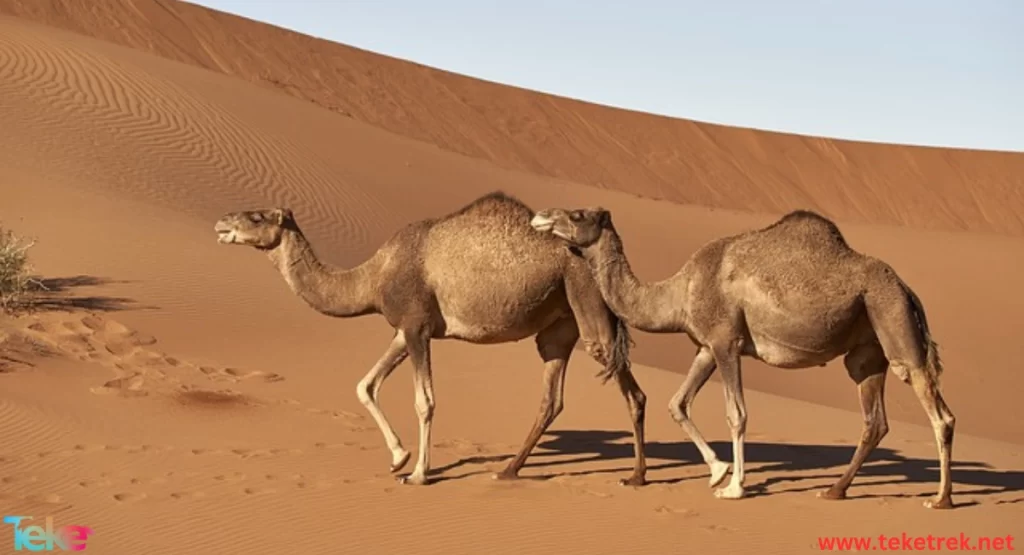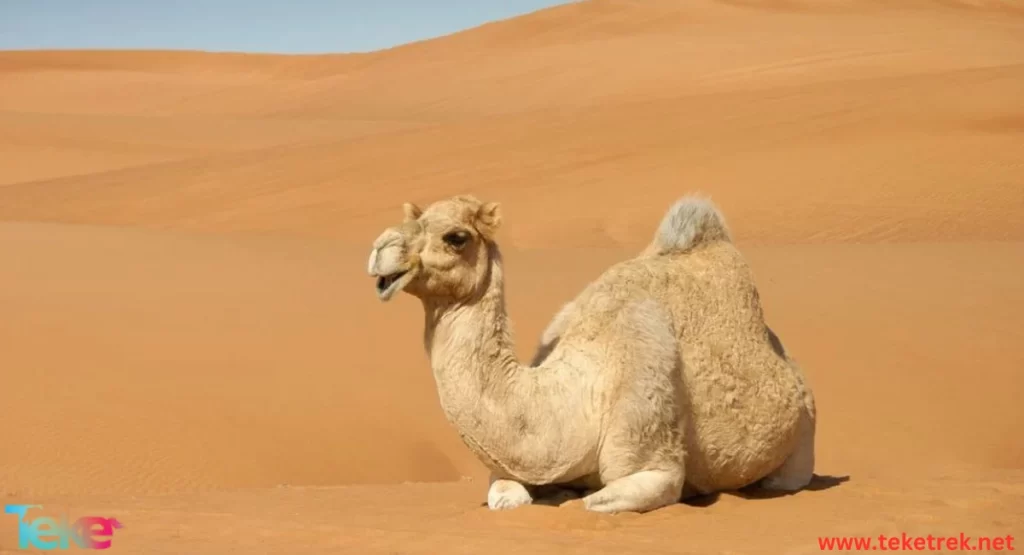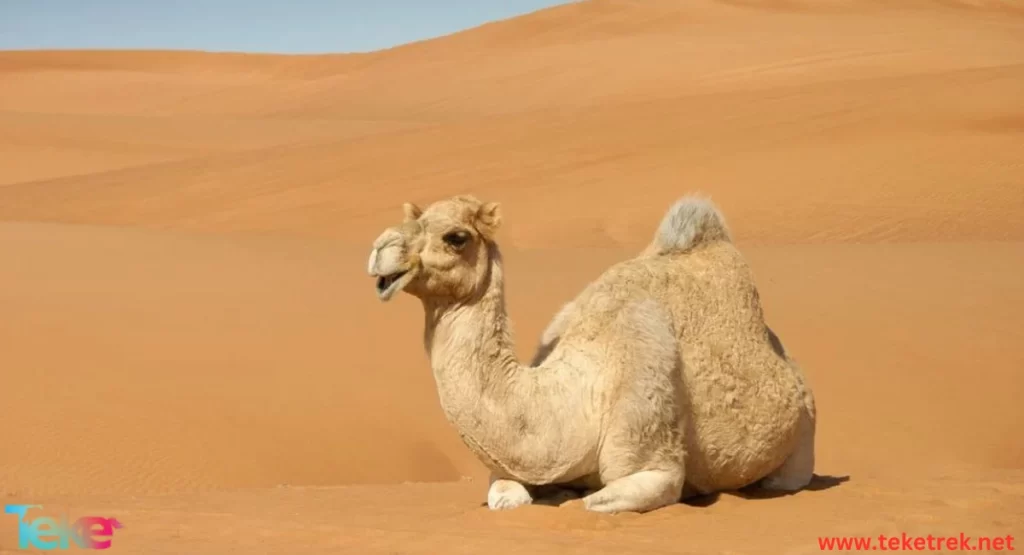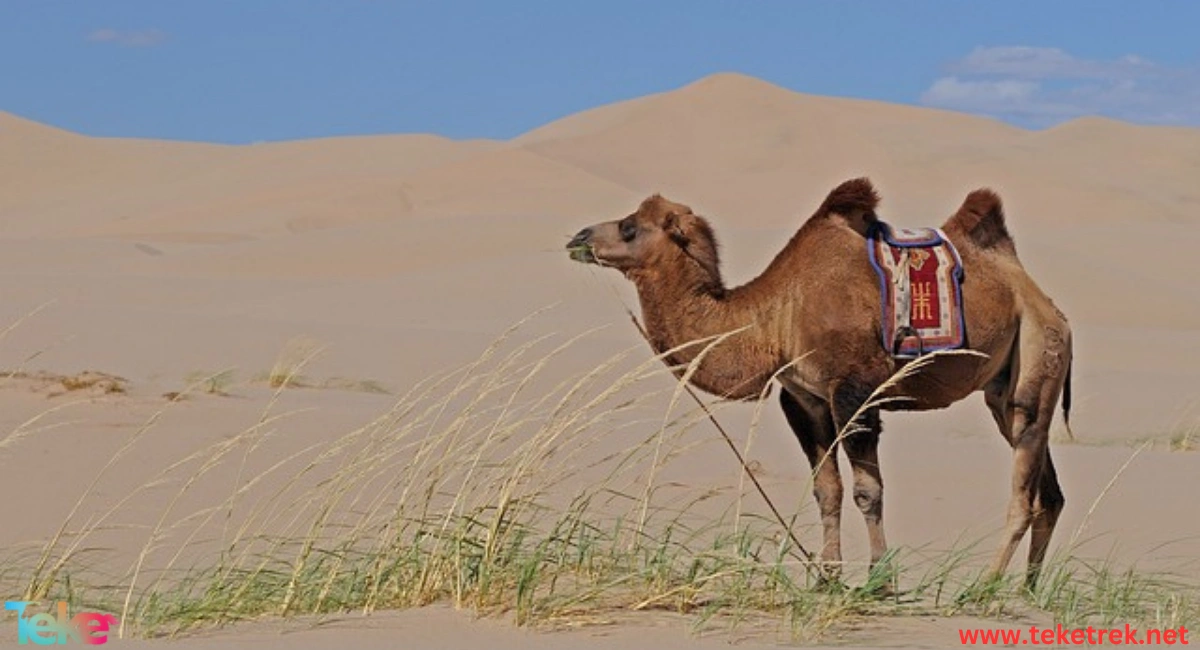The camel is a magnificent animal possessing a degree of beauty and majesty unmatched in the animal kingdom. It is one of the prominent animals living in desert regions, distinguished by its ability to adapt to harsh and arid environmental conditions. For this reason, it holds a special place in the hearts and cultures of people.
Camels have unique biological characteristics. They are hardy and robust animals capable of surviving long periods without needing large amounts of water. Thanks to their large bodies and humped backs, they can store significant amounts of fat, helping them withstand dry conditions. This unique ability makes camels ideal companions for long journeys across deserts.
Moreover, camel behavior is peculiar and fascinating. They are social animals that live in groups called “herds” and have the ability to communicate with group members using different sounds and movements. Camels also display friendly behavior towards each other, making them intriguing subjects for observation and study.

What are camels and what are their main species?
- Camels, known as “Camel” in English, are mammalian animals that inhabit the continents of Asia and Africa. They are characterized by their high ability to withstand thirst and adapt to the harsh desert environments, earning them the nickname “Ship of the Desert.”
The appearance and shape of camels
- Camels have a large stature and a curved back. They are characterized by a long neck and long legs, enabling them to navigate dry and desert environments easily.
- They have a relatively small head with large ears and eyes, allowing them to observe their surroundings well.
- Camels possess a strong jaw equipped with sharp teeth that help them consume dry grasses and plants, which are their main food source.
- Their fur is often gray or brown, and they have thick skin that protects them from extreme heat in desert environments.
The camel includes the following species
1- Arabian Camel (Camelus dromedarius):
Also known as the Arabian Dromedary, the Arabian camel has only one hump on its back. It was used for transportation and migration in the Arabian Peninsula around 2000-3000 BC. Additionally, it was used for meat, wool, milk, and leather.
2- Bactrian Camel:
The Bactrian camel has two humps, unlike the Arabian camel, to store fat and convert it into water and energy when needed. One of the common names for this species is “Gour.”
3- Wild Bactrian Camel:
Wild Bactrian camels inhabit the Gobi Desert and are considered endangered according to the Wildlife Preservation Society.
The most important features that camels possess
There are many important features and characteristics that camels possess, including:
1. Camels have an exceptional ability to endure drought and harsh conditions in deserts.
2. They have a rounded back that can store large amounts of fat to utilize when food and water are scarce.
3. Camels can live for long periods without needing to drink water.
4. They have a strong body and a high ability to carry heavy loads.
5. Camels are characterized by long eyelashes that help them tolerate heat.
6. They can adapt to environmental changes quickly.
7. Camels can walk long distances without feeling tired.
8. They have large feet that help them navigate through sand.
9. Camels can swim in emergencies.
10. They feed on grasses and plants available in deserts.
11. Camels use loud sounds to communicate with group members.
12. They exhibit social and friendly behavior towards group members.
13. Camels use various methods to defend themselves against predators.
14. They are known for their intelligence and high sensitivity in interacting with the surrounding environment.
15. Camels are considered symbols of culture and history in some societies.
Reproduction of camels
- Camel reproduction follows a specific pattern that varies slightly depending on environmental conditions and breed. Here’s an overview:
- Camels reach sexual maturity at around 3 to 5 years of age.
- They typically have a mating season that extends from November to February.
- Mating occurs when females are in heat, and it involves competition among males.
Pregnancy and Birth
- Camel pregnancies typically last between 13 and 15 months.
- Camels usually give birth to a single calf in each pregnancy, but occasionally twins can occur.
- The newborn camel is capable of standing and walking within a few hours after birth.
Care of the Young
- The mother camel provides full care for the young in the first few months of its life.
- Camel nursing is believed to last for about six months.
- Camels continue to grow and develop for several years until they reach full maturity.
What are the benefits of camels for the environment and humans?
The camel has many benefits for both the environment and humans, including:
1. Environmental Impact:
- Camels contribute to the distribution of plant seeds as they move around and consume plants, then excrete the seeds in their droppings, which helps in planting and regenerating vegetation.
2. Camel Adaptation to the Environment:
- Camels are an integral part of the ecosystem in arid regions, helping to balance and adapt the ecosystem to the conditions of drought and heat.
3. Human Uses of Camels:
- Humans utilize camels for various purposes, such as transportation and carrying loads, as well as for milk and meat production. Additionally, camel skin and wool are used in the manufacturing of clothing and blankets.
4. Tourism Attraction:
- Camels are part of the heritage and culture in some societies, contributing to tourism attraction and supporting the local economy.
In general, camels are important beings for the environment and humans. Preserving them and providing a safe environment is crucial to ensure their continuity in nature.


Frequently asked questions about camels
1- How long are camels?
Camels with one hump can reach a length of 6 to 7 feet.
2- What is the average lifespan of camels?
The average lifespan of camels is estimated at 35 years in the wild, although camels can live longer in some cases. The average lifespan of camels depends on factors such as environmental conditions, nutrition, and the level of care they receive. They are considered long-lived animals compared to some other species.
3- Do camels have hooves?
No, they do not have hooves like horses, cattle, or goats. Instead, they have padded and soft feet similar to human or dog feet, with only two toes on each foot.
4- What do camels eat?
Camels are herbivorous animals, primarily feeding on plants, including leaves, shoots, branches, and grasses. They can consume various types of plants, including small trees and herbs. Camels also can adapt to harsh conditions and dry environments, enabling them to survive even in areas with limited natural food sources.
5- How fast can camels run?
Camels do not have great speed compared to some other animals. They can walk at speeds ranging from 40 to 55 kilometers per hour, which is reasonable considering their size and body structure.
6- What are camel humps?
Camel humps are the bulges on the camel’s back, where water is stored along with large amounts of fat that act as insulation against harsh weather conditions.
7- What are the types of camels based on their place of origin?
Sudanese camels, Omani camels, hybrids, and crossbreeds.
8- What are the types of camels based on their drinking behavior?
Dab, Maqamah, Malawah, Rafaa, and Saloof.
9- What are the types of camels based on their color?
Dark brown or black.
Sandy brown.
Grayish-white.
In short
- The camel is an exceptional animal with unique abilities that enable it to adapt to harsh conditions in deserts. With its ability to withstand drought and heat, as well as its skill in navigation, swimming, and carrying heavy loads, the camel remains a symbol of resilience and strength in its natural environment. Its presence reflects the diversity of wildlife and underscores the importance of environmental conservation to ensure the survival of this magnificent creature in the wild.






